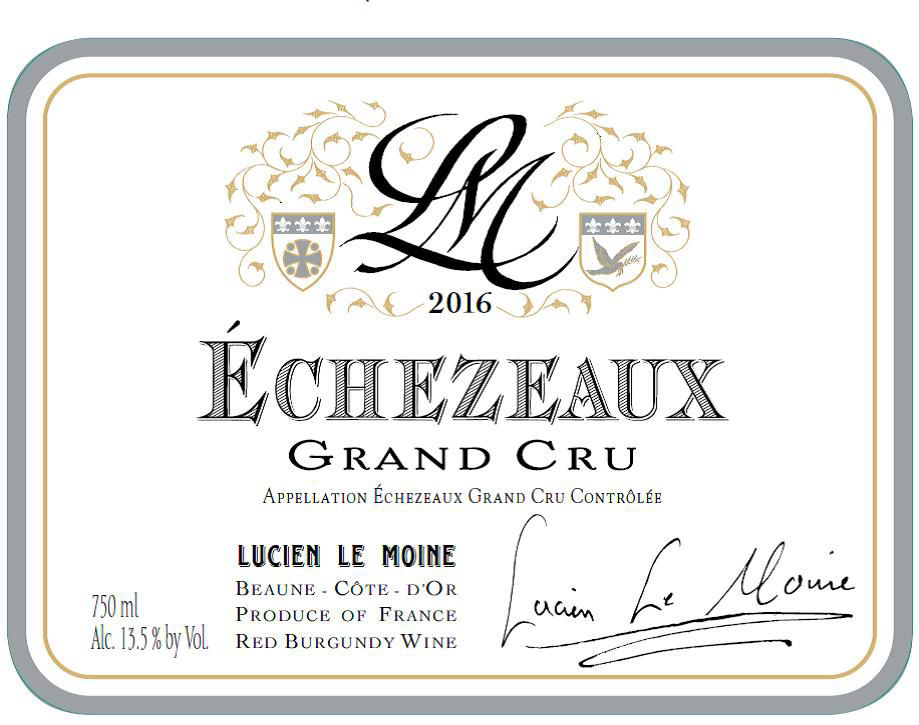
Lucien Le Moine
Échezeaux Grand Cru
Échezeaux Grand Cru
Lucien Le Moine has been producing one of the very finest examples of Échézeaux for several years running. Mounir says that you can make the analogy that Échézeaux is the syrah of Burgundy. On the Flagey side there is a flat exposition and the limestone is not as evident. As a result the wine has a licorice, smoky note which almost brings you to the Côte-Rôtie.

Lucien Le Moine
Clos de Vougeot Grand Cru
Clos de Vougeot Grand Cru
The largest Grand Cru in the Côte-de-Nuits, at 125 acres, Clos de Vougeot possesses differing soil structures and expositions and, notably, a large number of growers. The top of the vineyard features soils of pebbly limestone, which become marl further down the slope, and finally more alluival at the 23 bottom. Notoriously variable, from the best producers Clos de Vougeot produces generous, complex wines that can stand alongside any Grand Cru Burgundies.
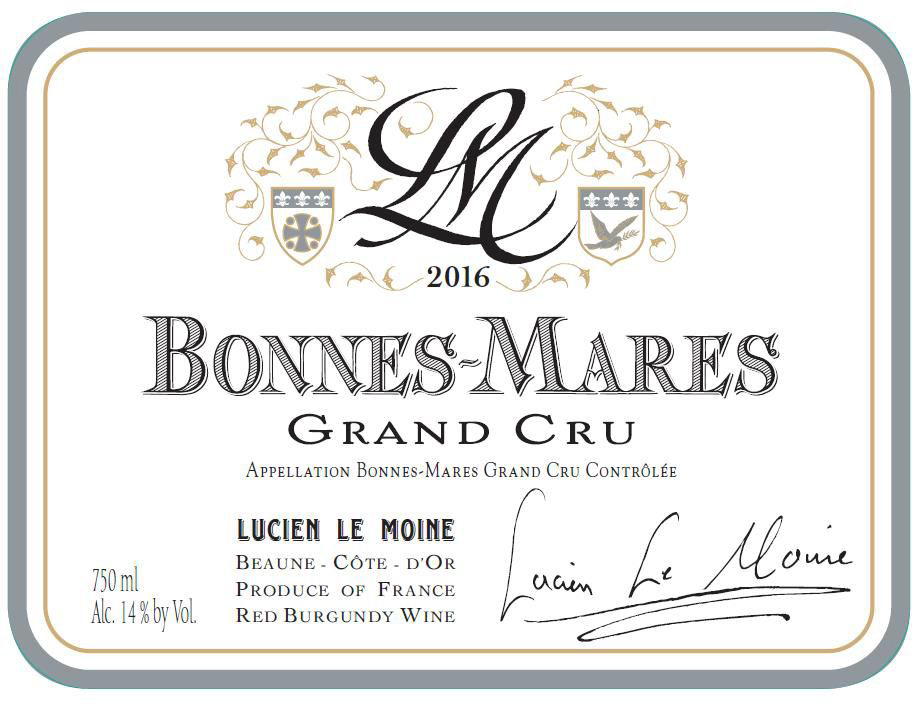
Lucien Le Moine
Bonnes-Mares Grand Cru
Bonnes-Mares Grand Cru
Mounir thinks of Bonnes-Mares as the ambassador of all the Côte d’Or – taste 15 wines from the Côte de Beaune and Côte de Nuits, and when you come to Bonnes-Mares it will have all the fruit, tannin, sweetness, and spice of the wines you just tasted. Because of its multi-dimensional power and beauty, Bonnes-Mares has become one of if not the signature wine from Lucien Le Moine.
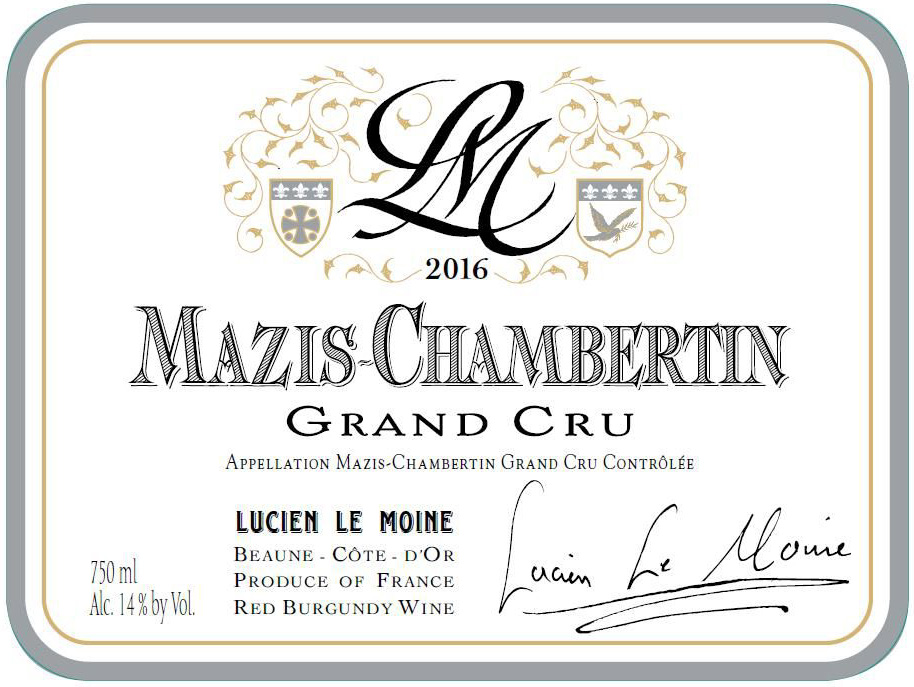
Lucien Le Moine
Masiz-Chambertin Grand Cru
Mazis-Chambertin Grand Cru
The Mazis-Chambertin parcel used by Lucien Le Moine lies in poor clay soils, from the highest part of the vineyard where there is only 4 inches of soil. Mounir likes to say that the sun almost touches the roots. As a result, this wine has powerful, jammy, almost barbecue flavor and a lot of smokiness (some will attribute this to oak, but it is the natural character of the site). There is an animal side to the wine that at Lucien Le Moine is tempered by an extended aging which brings out notably a red currant character. In addition, with bottle age the fruit becomes more apparent.
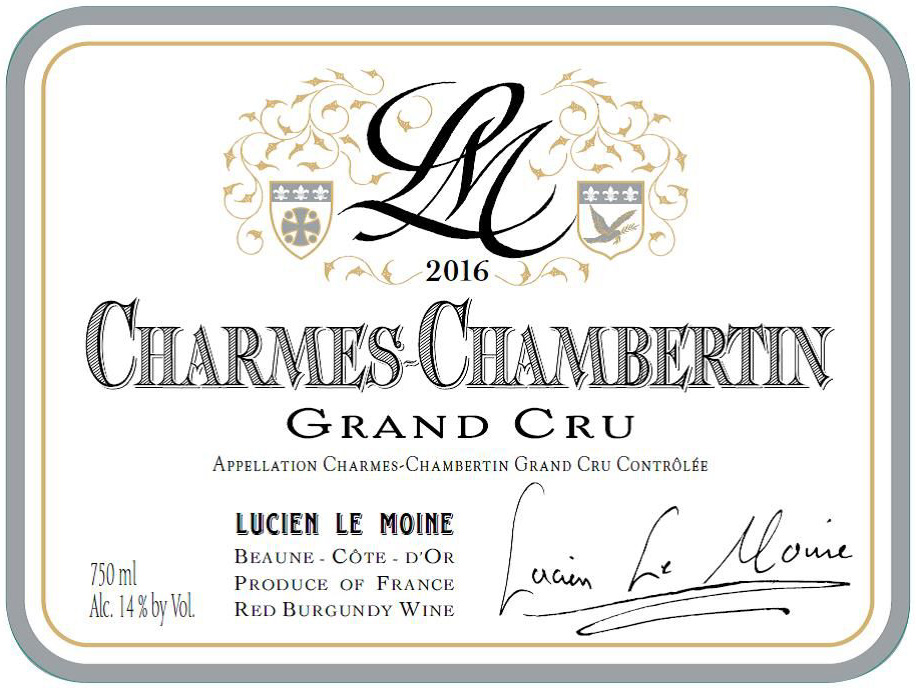
Lucien Le Moine
Charmes-Chambertin Grand Cru
Charmes-Chambertin Grand Cru
As the name suggests, wines from this vineyard are full of charm - beautiful aromatics and weight. Mounir looks for the “charm” in Charmes-Chambertin - a wine with sweetness, fruit, spice, chocolate notes. He feels it is at its best when it is attractive and approachable.

Lucien Le Moine
Latricières-Chambertin Grand Cru
Latricières-Chambertin Grand Cru
Latricières is often thought of as a “sturdy” Gevrey-Chambertin Grand Cru, Le Moine’s 2014 has an overtly elegant side that comes through, surprising and exceptionally promising.
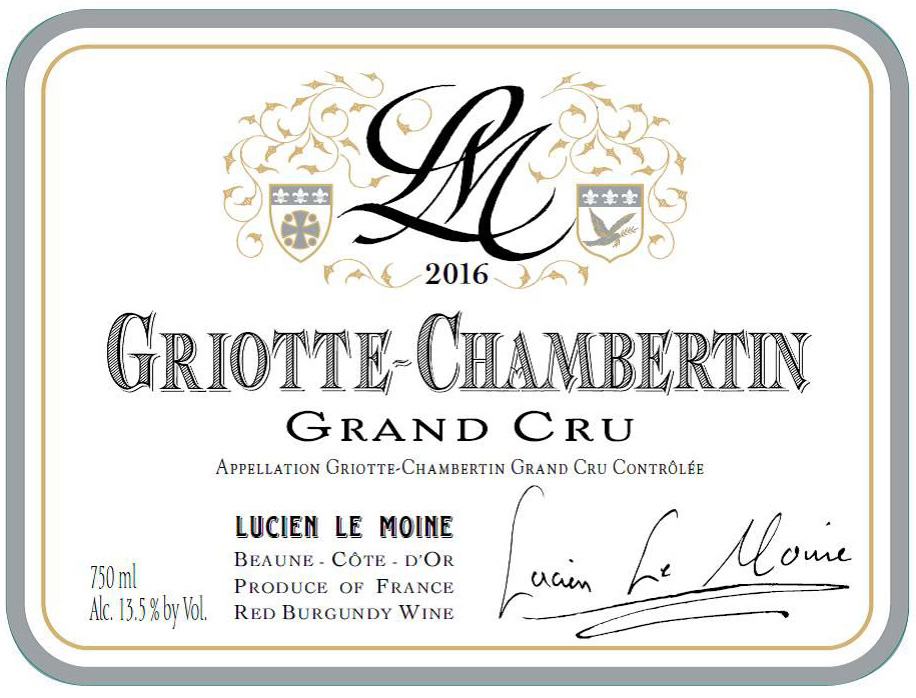
Lucien Le Moine
Griotte-Chambertin Grand Cru
Griotte-Chambertin Grand Cru
Griotte-Chambertin is one of the most elusive Grand Crus in Burgundy; it’s the smallest Grand Cru in Gevrey at only 3 hectares in size. The vineyard faces north-east, which means the vines are not fully exposed to the morning sunshine - this contributes to the fresher, less masculine style of its wines.

Marietta Cellars
Old Vine Riesling
California, United States
Marietta's Old Vine Riesling is the most recent and unique extension of the Old Vine series (or "OVR"). Originally intended as a gift for Scot's partner, Lisa, who is German, the bone dry style of Riesling became a fan favorite and permanent addition. While it is the only wine is the lineup that is not estate grown, it comes from some of California's oldest Riesling vines and offers an extraordinary value and delightful drinking experience.

Lynmar Estate
Russian River Valley Chardonnay
Russian River Valley
This classic representation of Russian River Chardonnay from Lynmar features a selection of clones, each vinified separately and blended together, that show the range of flavors and textures that can be achieved in this climate.

Lucien Le Moine
Chevalier-Montrachet Grand Cru
Chevalier-Montrachet Grand Cru
The gentleman, as Mounir calls Chevalier-Montrachet, a wine that always shows lovely definition and everything in place; classic grace.
Juvé & Camps
Milesimé Chardonnay
Penedès
Part of Juvé & Camps’ Milesimé range (Gran Reserva vintage-dated monovarietal bottlings), this Chardonnay grows from a single estate in Penedès. Aged beyond the minimum requirements, it embodies Juvé & Camps’ commitment to the finest quality of Spanish wine.

Shiraz
Langhorne Creek
Heartland Shiraz is an elegant and pure expression of one of Australia's most iconic varieties. The Langhorne creek climate and the sandy loam soils make for a Shiraz that is savory, rich and yet balanced and restrained.

Lucien Le Moine
Batard-Montrachet Grand Cru
Batard-Montrachet Grand Cru
Bâtard-Montrachet borders Montrachet on the west, and is typically a fatter, more open and more exotic wine than Chevalier-Montrachet, with less grip and a more flowery, honeyed richness.

Cabernet Sauvignon
Langhorne Creek
Langhorne Creek is one of Australia's most ideal climates for growing Cabernet Sauvignon and has the oldest recorded Cabernet vines in the world. It is, more specifically, cool enough to producer Cabernet wines with structure and characteristic savory notes.

Château Tour d’Auron
Château Tour d'Auron is a small production estate that produces wines with remarkable structure and aging potential. The difference in site from its neighbors owned by Gerard Milhade and his family is striking, as this wine exhibits a much darker fruit and earthy character.
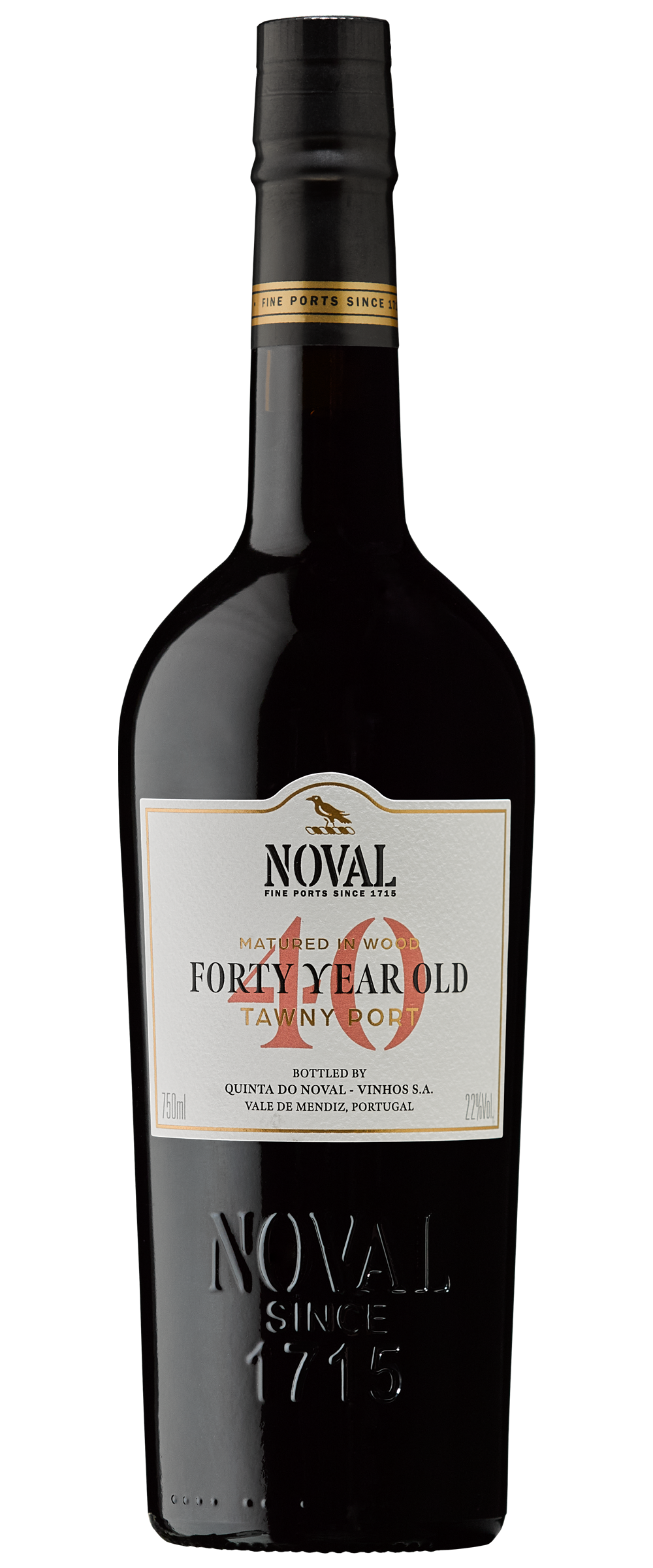
Quinta do Noval
Tawny 40 Year Old Port
Douro Valley, Portugal
Noval was the first port house to introduce blended tawnies with an indication of average age. Their eldest offering, the Noval Tawny 40 Year Old Port, is a remarkable representation of the quintessence of the Noval Tawny style: a profoundly concentrated and complex old wine, the memory of the house.
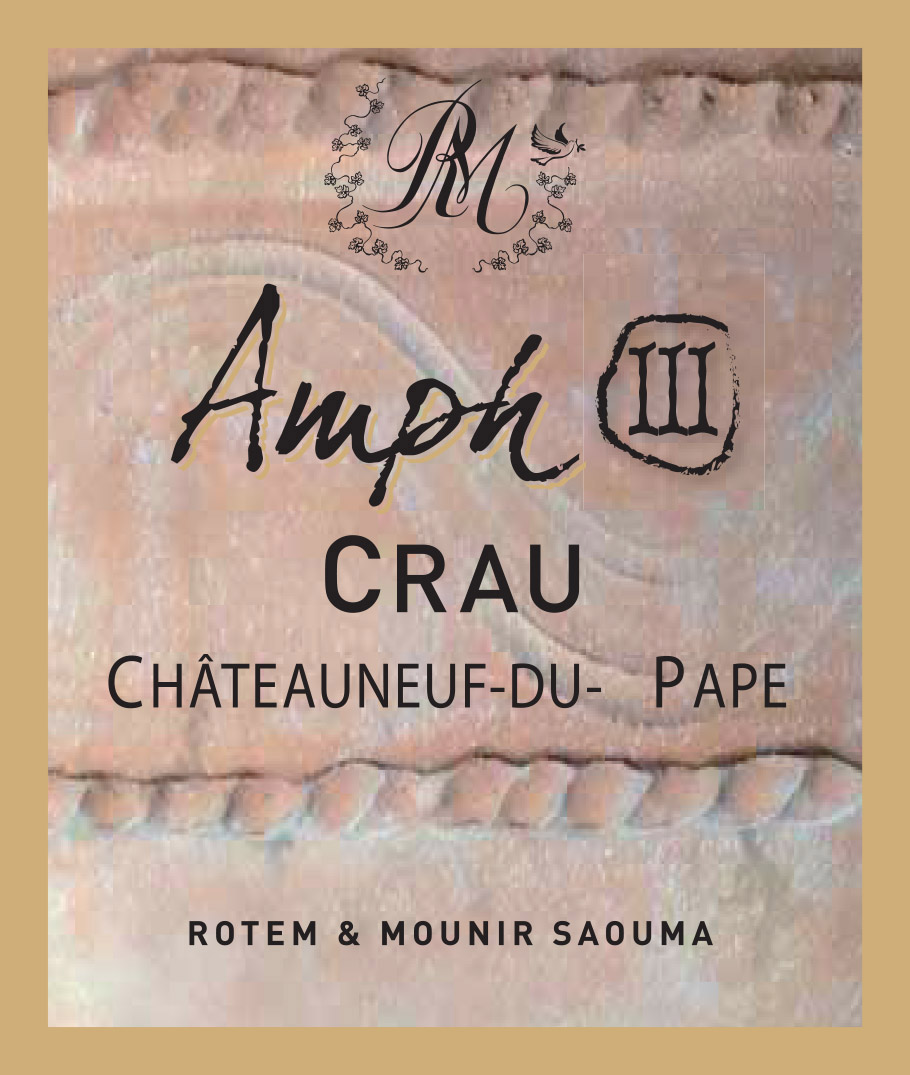
Rotem and Mounir Saouma
Rotem and Mounir Saouma Amphorae Collection
Chateauneuf-du-Pape
Every year Mounir will select several crus to age in Amphorae, where they will remain untouched for around a year, with no input. Then a gentle pressing and bottling. These wines transmit the characteristics of their terroir in a pure, unvarnished manner. Not normal wines, but then again nothing Mounir Saouma does is normal .
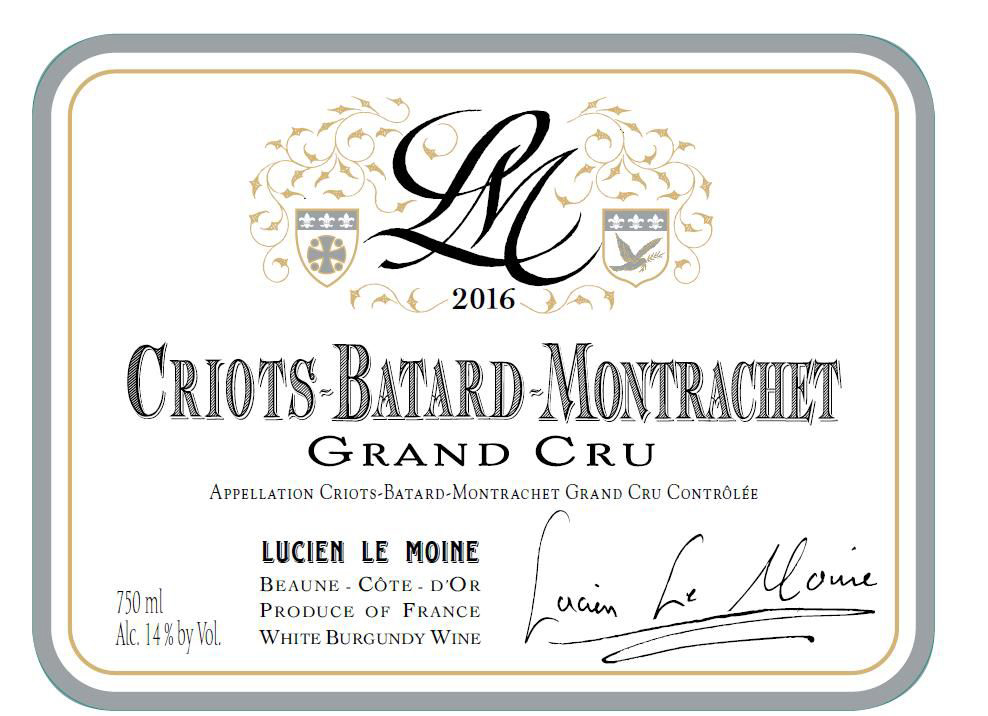
Lucien Le Moine
Criots-Batard-Montrachet Grand Cru
Criots-Batard-Montrachet Grand Cru
The soils in Criots are a combination of marl, clay and chalk. In fact, the word “Criots” means chalk in French. The south-east facing slope lies at an altitude of around 780 feet - slighly lower than neighboring Chevalier-Montrachet and Le Montrachet, so the slopes tend to have a higher proportion of clay. Mounir describes this wine as “a bridge between the body of Bâtard and the class of Montrachet.

Château Damase
Chateau Damase is a completely charming wine, planted primarily to Merlot with some of "Bordeaux's Lost Grape" - Carmenere. The vibrant Merlot along with the lovely spicy touches make Damase somewhat of the classic fresh, Bordeaux bistro red.

Directors’ Cut Shiraz
Langhorne Creek
Heartland's flagship wine is made from the finest selection of Shiraz from each vintage. Directors' Cut is the most powerful expression of Langhorne Creek - the wine first bottled by demand for the board meetings of the Directors of the Heartland wine company.